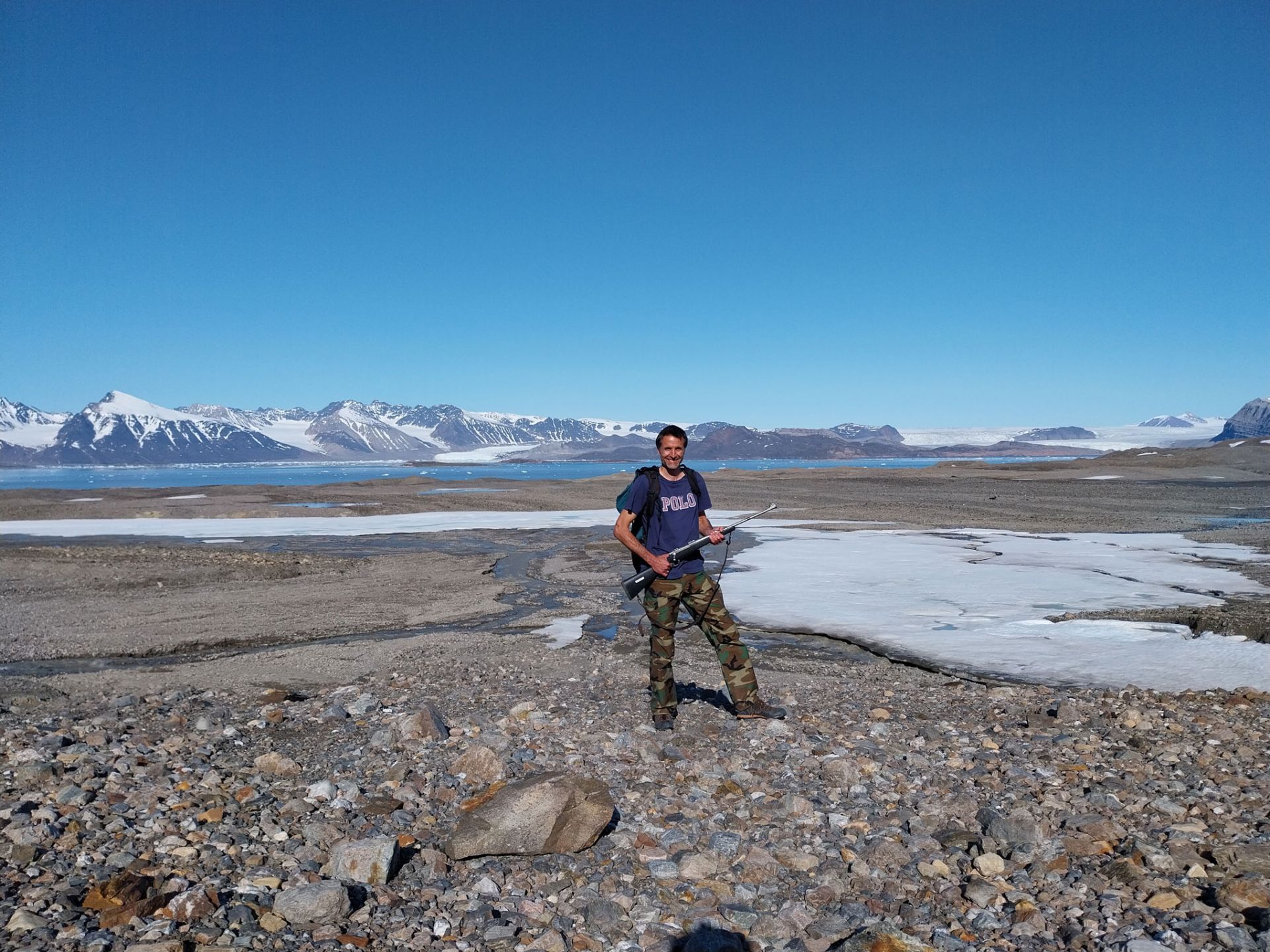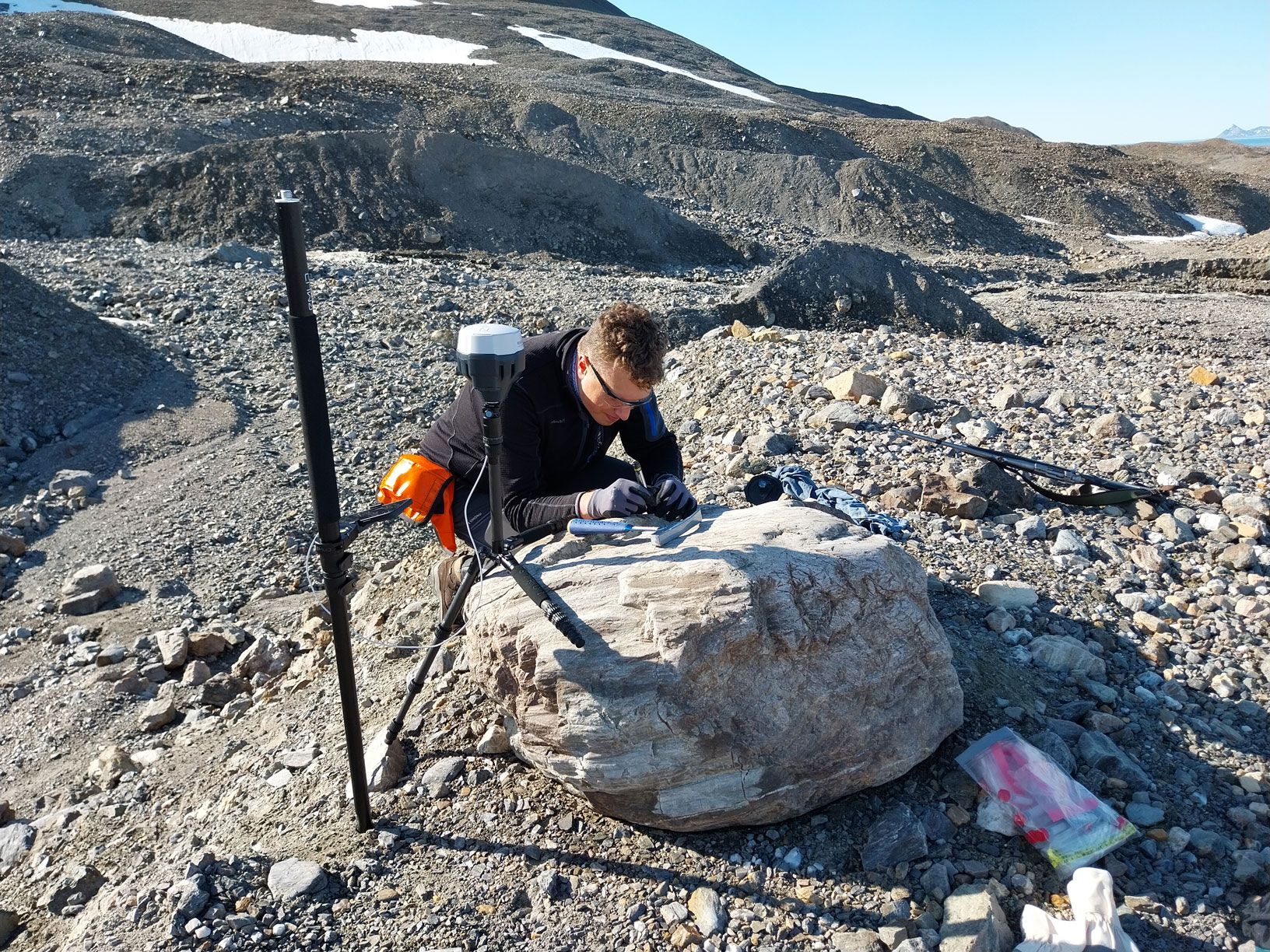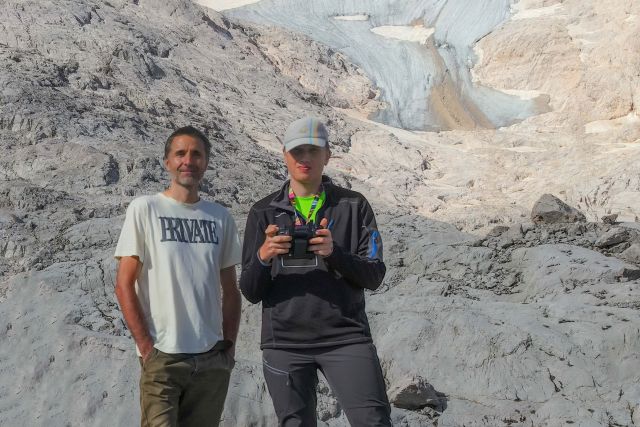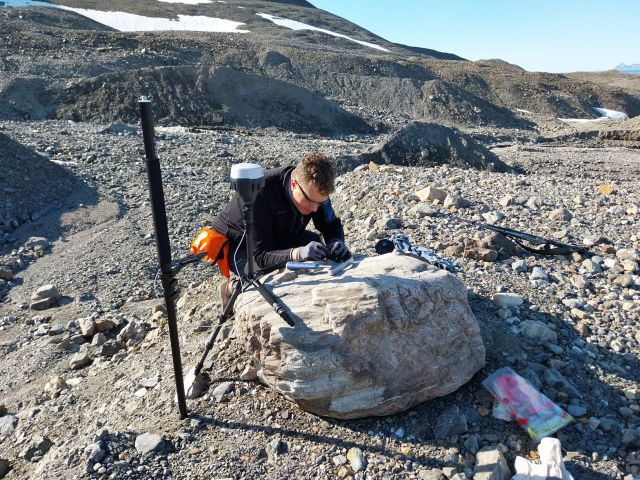Principal Investigator
:
Dr hab. Maciej Dąbski
University of Warsaw
Panel: ST10
Funding scheme
: PRELUDIUM BIS 2
announced on
15 September 2020
Global climate change is causing glaciers around the world to shrink rapidly, and recently deglaciated landscapes undergo complex adaptations to the new conditions. Weathering processes that act on rock surfaces within glacial forelands are at the forefront of these changes. However, studies on the rate of rock surface decay in glacial forelands today are few and far between, which represents a gap in knowledge that urgently needs to be filled. Our project focuses on the surfaces of moraines and other landforms shaped by glaciers since the 19th-century glacial maxima (or what is now known as the “Little Ice Age” or LIA) until today, which represents just a blink of an eye in geological time.
In our project, we study the development rate of the weathering microrelief on abraded rock surfaces, i.e., how quickly different rocks lose their elasticity (weathering normally reduces their surface hardness) and increase in roughness. We study the structure of the outer rock layer (the “weathering rind”) at the microscopic scale to determine whether the progress of weathering can be observed in the spectrum of reflected visible and infrared light and, if so, what factors account for observed changes in the spectrum. The main goal of the project is to determine to what extent these rock features could be used in the relative dating of glacial landforms.
 In Spitsbergen, you need a riffle for use as polar bear protection. Photo by Ireneusz Badura
We have already completed our fieldwork and reached the midpoint of our project. The fieldwork was done in the Hallstaetter glacier foreland in the Salzburger Alps (limestone) and the Midtre Lovénbreen glacier on Spitsbergen (gneiss). These areas share a similar glacial origin and age, which implies a comparable length of the weathering period. However, they are markedly different in terms of climate and petrography. In each foreland, we designed five test fields distributed along transects that ran from the youngest rock surfaces (near the margin of the glacier) to the oldest (at LIA glacial maximum). The fields were located on bedrock or eroded boulders embedded in the moraines. Particular attention was paid to rocks that bore distinct traces of glacial abrasion, allowing us to infer that the rock surfaces were “zeroed out” in terms of weathering as the glacial ice retreated. We also completed a photogrammetric survey and LiDAR scanning (using an unmanned aerial vehicle), which allowed us to create highly accurate orthophoto maps, 3D models and Digital Elevation Models.
In Spitsbergen, you need a riffle for use as polar bear protection. Photo by Ireneusz Badura
We have already completed our fieldwork and reached the midpoint of our project. The fieldwork was done in the Hallstaetter glacier foreland in the Salzburger Alps (limestone) and the Midtre Lovénbreen glacier on Spitsbergen (gneiss). These areas share a similar glacial origin and age, which implies a comparable length of the weathering period. However, they are markedly different in terms of climate and petrography. In each foreland, we designed five test fields distributed along transects that ran from the youngest rock surfaces (near the margin of the glacier) to the oldest (at LIA glacial maximum). The fields were located on bedrock or eroded boulders embedded in the moraines. Particular attention was paid to rocks that bore distinct traces of glacial abrasion, allowing us to infer that the rock surfaces were “zeroed out” in terms of weathering as the glacial ice retreated. We also completed a photogrammetric survey and LiDAR scanning (using an unmanned aerial vehicle), which allowed us to create highly accurate orthophoto maps, 3D models and Digital Elevation Models.
 Ireneusz Badura determining the location of the measurement points. Photo by Maciej Dąbski
To date, we have already processed our results from the Alpine foreland. We have found that, as the glacial landforms become older, the surface of the limestone becomes more rough, with an accompanying decrease in elasticity. At the same time, less radiation is reflected, but only in the visible spectrum. Older rock surfaces (subject to weathering for more than 100 years) reflect more infrared radiation. Microscopy analyses revealed that young limestone surfaces contain many sharp-edged microstructures that we interpret as a record of glacial abrasion. It was only in older fields that we found smooth microstructures suggestive of calcite dissolution. An important role is played by rock features such as the presence of micrite or sparite crystals, phlogopite streaks, etc. We also detected microorganisms that contributed to the formation of spongy microstructures within the rock, not just through limestone degradation but also biomineralization (cyanobacteria). Such organisms strongly reflect infrared radiation, which probably explains the unexpected increase we observed in older test fields. At present, we are processing our Spitsbergen data.
Ireneusz Badura determining the location of the measurement points. Photo by Maciej Dąbski
To date, we have already processed our results from the Alpine foreland. We have found that, as the glacial landforms become older, the surface of the limestone becomes more rough, with an accompanying decrease in elasticity. At the same time, less radiation is reflected, but only in the visible spectrum. Older rock surfaces (subject to weathering for more than 100 years) reflect more infrared radiation. Microscopy analyses revealed that young limestone surfaces contain many sharp-edged microstructures that we interpret as a record of glacial abrasion. It was only in older fields that we found smooth microstructures suggestive of calcite dissolution. An important role is played by rock features such as the presence of micrite or sparite crystals, phlogopite streaks, etc. We also detected microorganisms that contributed to the formation of spongy microstructures within the rock, not just through limestone degradation but also biomineralization (cyanobacteria). Such organisms strongly reflect infrared radiation, which probably explains the unexpected increase we observed in older test fields. At present, we are processing our Spitsbergen data.
Project title: Micro-weathering and spectral signatures of rock surfaces in glacier forelands
Dr hab. Maciej Dąbski
I am a geographer and geomorphologist affiliated with the Faculty of Geography and Regional Studies of the University of Warsaw. I earned a PhD in 2004, followed by the degree of habilitated doctor in 2015. My research interests focus on geomorphic processes in modern glacial forelands (Iceland, the Alps, Spitsbergen). I am also interested in the photointerpretation of landforms, as well as different spatial planning issues in cold-weather regions. I have recently joined the activities of the Committee on Polar Research of the Polish Academy of Sciences.
Ireneusz Badura
I am a graduate of the Faculty of Geography and Regional Studies of the University of Warsaw and, since 2021, a PhD candidate at the Doctoral School of Physical and Life Sciences of the University of Warsaw. I am interested in the applications of new technologies, such as unmanned aerial vehicles, in Earth and environmental sciences. Participation in this project allows me to pursue my passions in the Arctic and in the high mountains.
Maciej in a white T-shirt and Irek in a hat photographed on the Hallstaetter glacier foreground.


